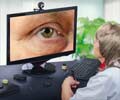
Bo Li, M.D., of Western University, Ontario, Canada, and co-authors conducted a randomized clinical trial to evaluate teleophthalmology as a tool for screening and monitoring neovascular AMD. The trial included 106 patients referred for screening of suspected AMD and 63 patients with stable AMD monitored for recurrence. Of the 106 patients (106 eyes) referred for screening, 54 patients received routine screening at a hospital-based retina clinic and 52 patients had teleophthalmologic screening at a standalone site and their information and imagings were sent electronically to hospital-based retina specialists. Of the 63 patients (63 eyes) referred for AMD monitoring, 36 patients had routine monitoring and 27 had teleophthalmologic monitoring.
Study results show that for screening, the average referral-to-diagnostic imaging time was 22.5 days for the teleophthalmology group and 18 days for the routine care group. The average diagnostic imaging to treatment time was 16.4 days for the teleophthalmology group and 11.6 days for the routine care group; this difference was not statistically significant. The authors suggest the routine care group likely had a shorter average diagnostic imaging to treatment time because retina clinic-based screening offered the possibility of immediate treatment on site.
In the monitoring of patients for AMD recurrence, the average recurrence to treatment time was shorter for the routine group (0.04 days) compared with 13.6 days for the teleophthalmology group. The authors suggest that wait time from recurrence to treatment was shorter in the routine care group because teleophthalmology patients with disease recurrence had to be booked into the retina clinic for treatment at a later date. The nearly two-week average wait time did not result in worse visual field outcomes, the authors note.
"This work further supports the need for a network of teleophthalmologic imaging sites in remote areas. It allows general ophthalmologists and optometrists to offer expanded basic retinal services under the teleophthalmic guidance of retinal specialists. With the aging population and ever increasing incidence of AMD, teleophthalmology will hopefully bring convenience and cost-saving opportunities both to the health care system and patients and caregivers," the study concludes.
Source-Eurekalert










